By Dan Weisz
Hooded Orioles are another species of birds that call Tucson their summer home and can be seen readily in the Foothills. It is always surprising to me to think that birds will migrate north during the hottest part of the year, to start and raise a family in our desert climate. (Male) Hooded Orioles are brilliant yellow and black birds. The male bird in these photos was found along a residential neighborhood close to the Coronado National Forest in the Catalina Foothills. I had parked there to get a closer look at the fires last week when I heard him singing from the tall palm trees by my car.
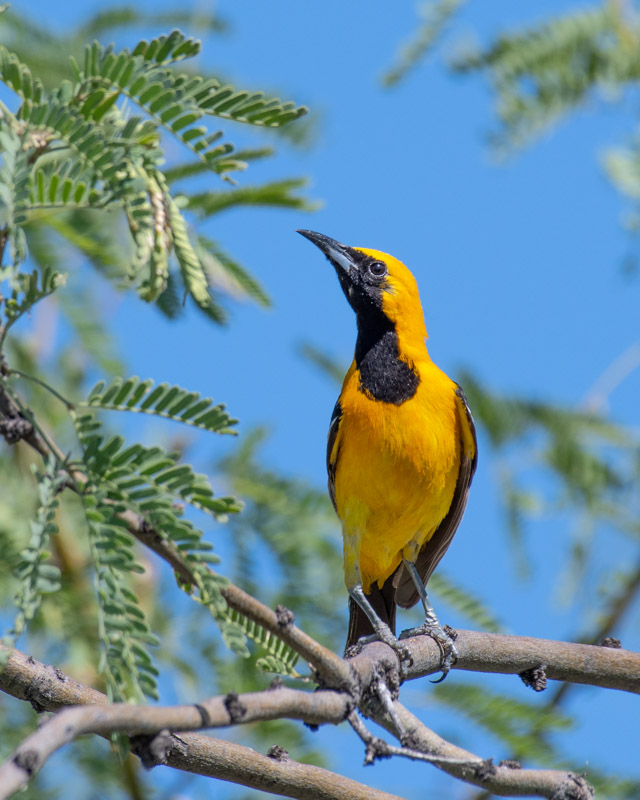
The Hooded Oriole song and calls are distinctive but variable. Their songs have been described as a “scratchy, abrupt warble interspersed with catlike cries, chatters and sometimes mimicked parts of the songs of other species.” Huh?? And their call is a “sharp and nasal sounding wheet” along with a “harsh chuck.” Listen to some samples here and see if you agree!! https://www.allaboutbirds.org/guide/Hooded_Oriole/sounds
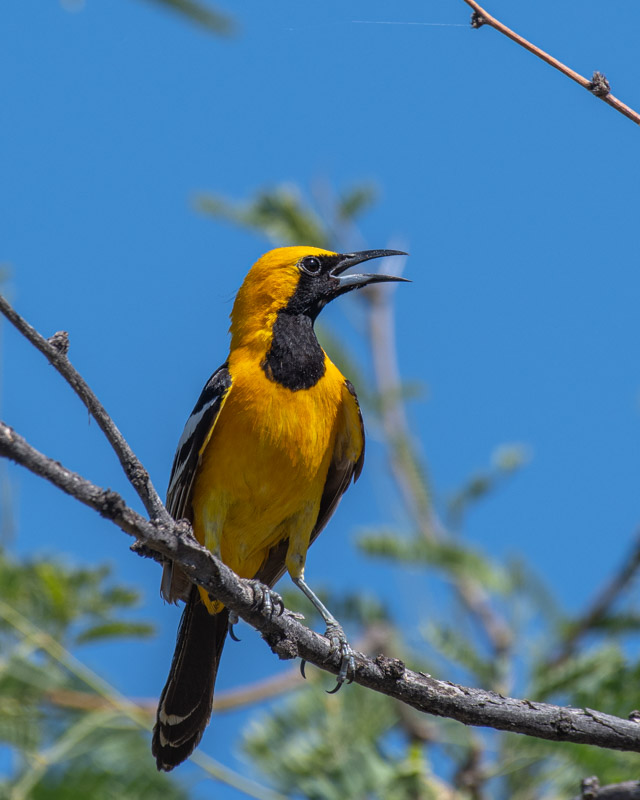
The range map below tells you how far Hooded Orioles come during the summer breeding season. In the southwest, Hooded Orioles are bright yellow but in Texas and eastern Mexico, they are flame orange.
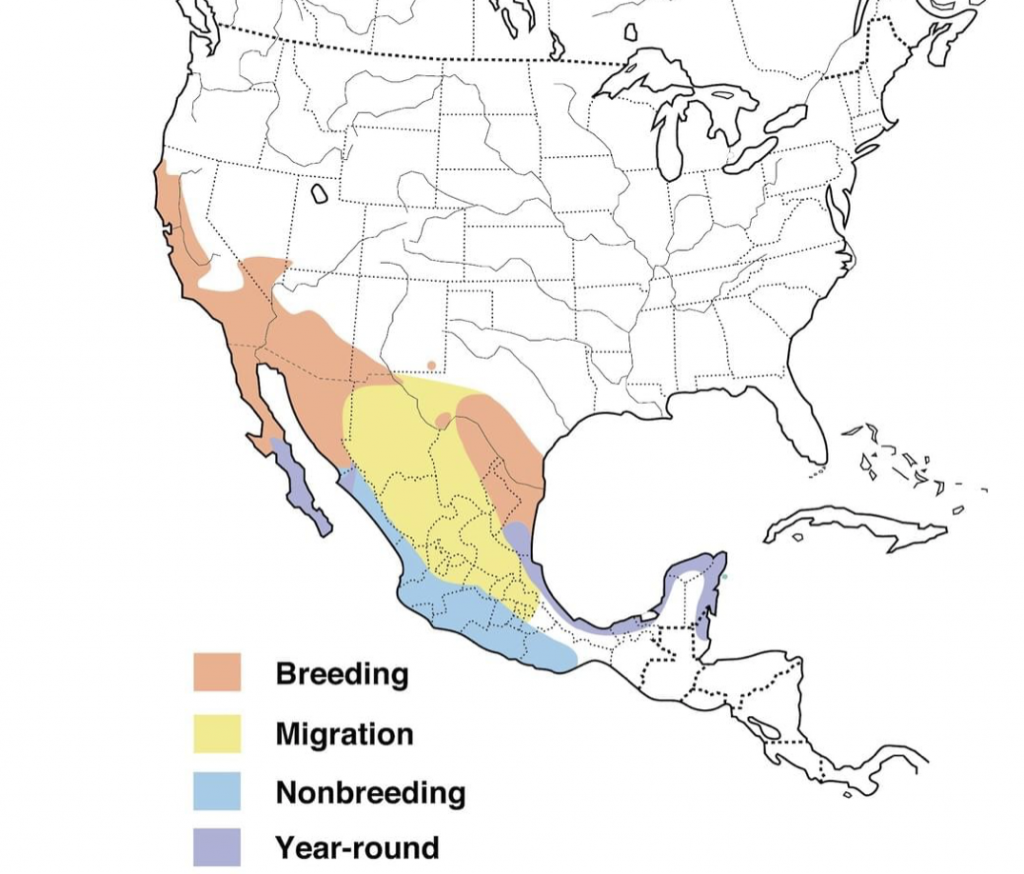
This Hooded Oriole moved from palm tree to mesquite tree to the ocotillo below (and later to some saguaros). Hooded Orioles are omnivores, eating both bugs and insects of all kinds as well as fruit and nectar. They are named after the yellow “hood” over their heads.
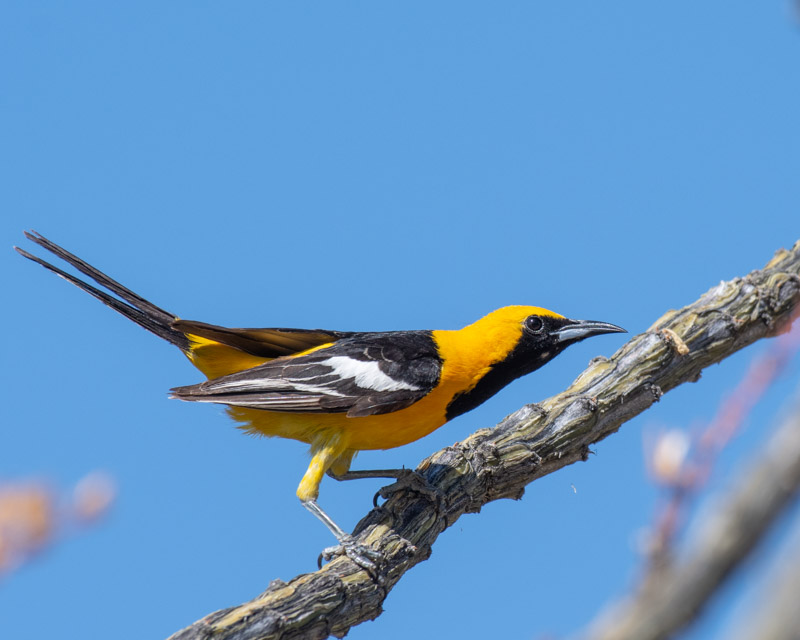
Doing the splits on an ocotillo plant! Hooded Orioles are part of the Blackbird family and a family trait is those very strong, long pointed bills.
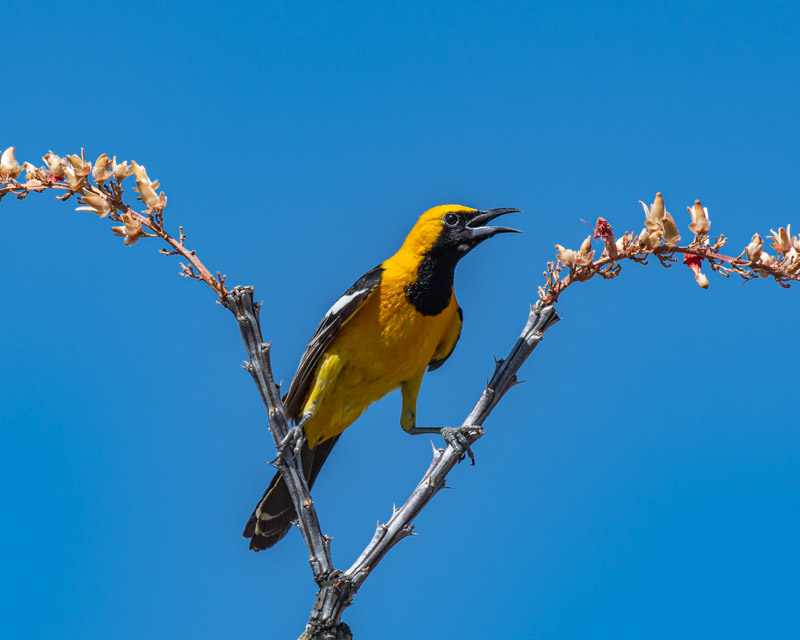
Hooded Orioles will take advantage of saguaro fruit as do so many birds here in the summertime.
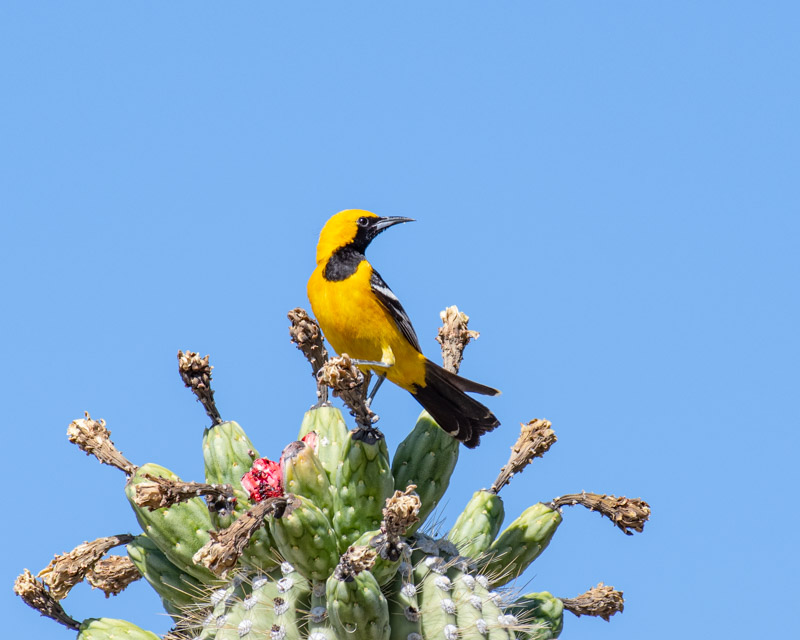
Hooded Orioles have been nicknamed “Palm-leaf Orioles” because of their tendency to build nests in palm trees. In Tucson, look at the underside of palm leaves for a round yellow nest. Hooded Orioles strip the fibers off of the sides of palm leaves and literally sew the fibers through palm leaves to build a nest that hangs on the underside.
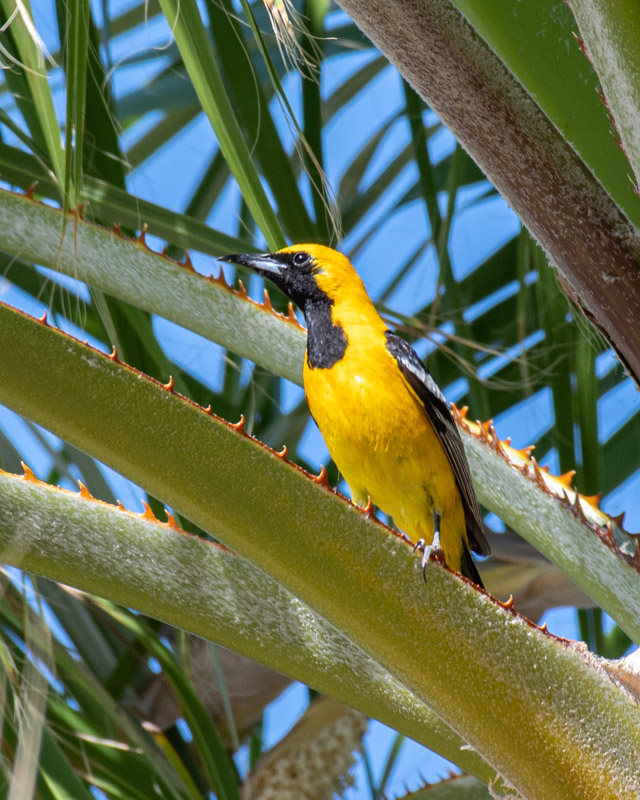
The photo below of a Hooded Oriole nest was taken by me two years ago at Agua Caliente Park. You can see the female’s tail sticking out of the “back door” of the nest and there is another opening at the front end of the nest. You can see other palm leaf fibers hanging down around the nest.
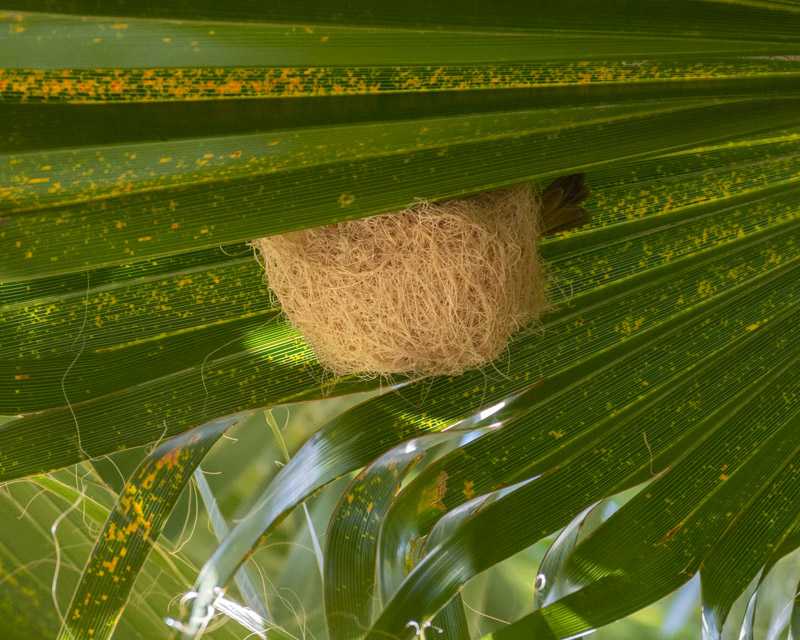
By the way, female Hooded Orioles do not have the bright yellow and dark black feathers that the males do. I did not see the female of this pair. Perhaps she is sitting in her nest with eggs. Females are olive-yellow overall with gray backs and wings.
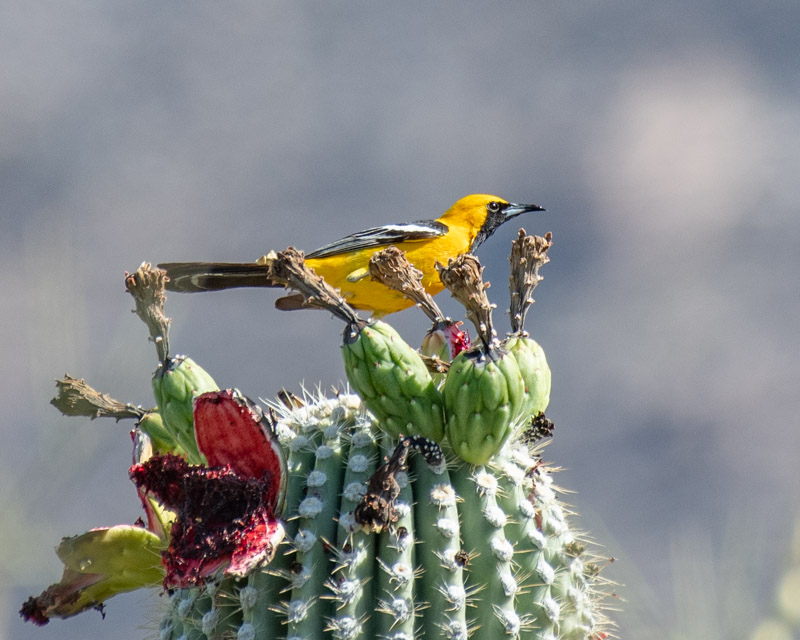
If you live in Tucson, keep your eyes on any palm trees you pass by this summer!
